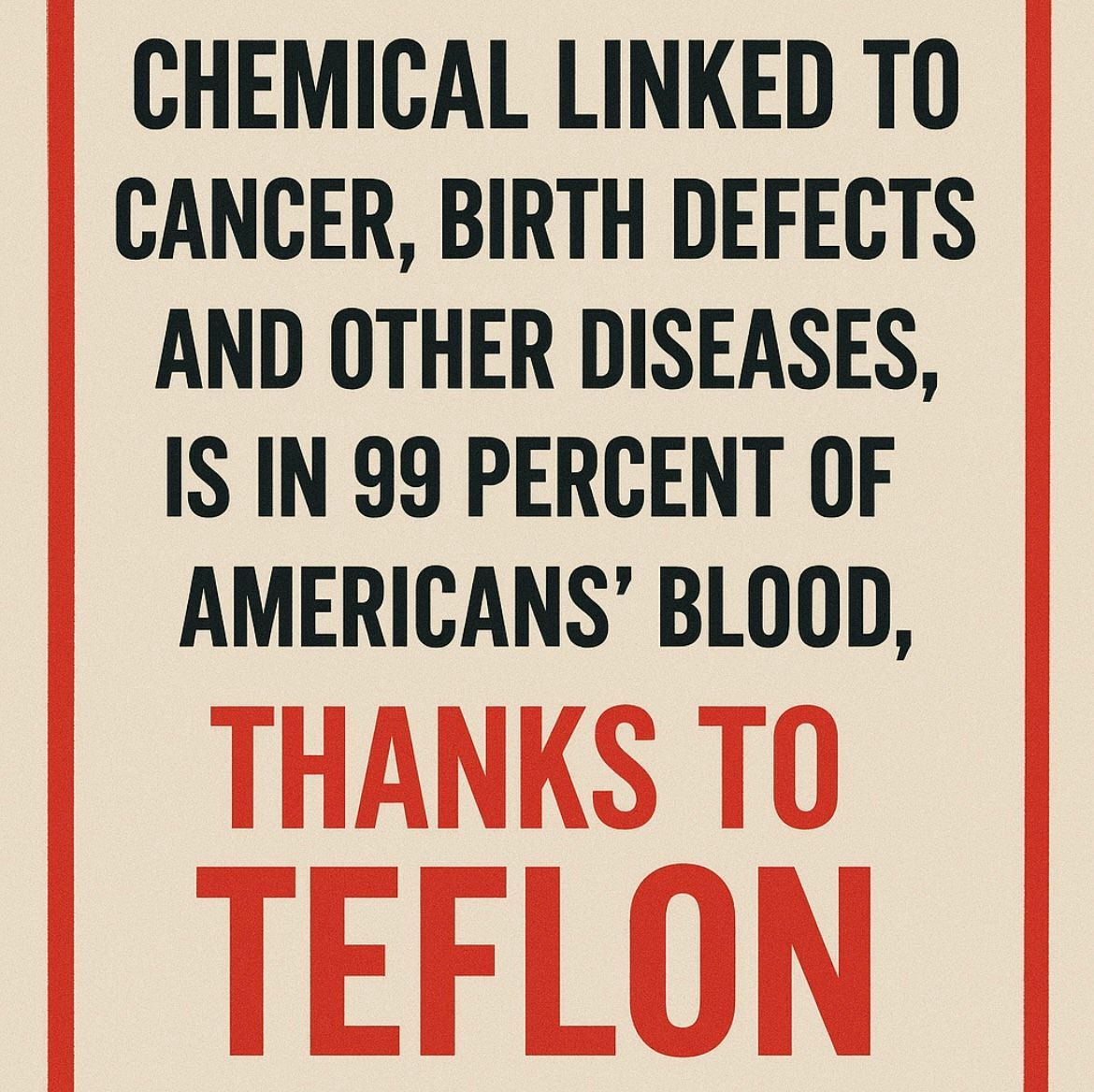Teflon Chemical Linked to Cancer Found in 99% of Americans’ Blood
he Hidden Dangers of Teflon: How PFAS Chemicals Contaminate Our Blood and Harm Our Health
Teflon’s Toxic Legacy: Why 99% of Americans Carry This Chemical in Their Blood
When you think of Teflon, you probably picture a “nonstick” frying pan that makes cooking easier. What most people don’t realize is that the same chemicals that make Teflon work are now inside nearly every American. Studies have shown that PFAS (per- and polyfluoroalkyl substances)—often called forever chemicals—are present in 99% of Americans’ blood. These compounds don’t break down easily, and instead build up in our bodies, our water supply, and our environment.
The Health Risks of PFAS Exposure
PFAS chemicals are linked to some of the most devastating health problems:
- Cancer – Increased risk of kidney, testicular, and other cancers
- Birth defects – Interference with fetal development
- Hormone disruption – Damaging thyroid and reproductive hormones
- Immune dysfunction – Weakening your body’s natural defense system
What makes this especially concerning is how small exposures over time add up. Each sip of contaminated water, each meal cooked on a nonstick pan, and even household dust can contribute to your overall toxic load.
Why It’s Everywhere
Teflon and PFAS were celebrated for being “durable, stain-resistant, and waterproof.” They ended up in cookware, carpets, clothing, food packaging, and even dental floss. Once these chemicals enter the environment, they don’t go away. That’s why researchers now find them in the blood of almost every American tested.
What Most People Get Wrong
Many believe that because Teflon is FDA-approved and sold in stores, it must be safe. But approval doesn’t mean harmless. Regulatory agencies often lag behind research, and the health effects of PFAS have been downplayed for decades. By the time the risks were widely acknowledged, the chemicals were already everywhere.
What You Can Do Instead
You may not be able to eliminate all PFAS exposure, but you can reduce it significantly:
- Switch to stainless steel or cast-iron cookware instead of nonstick pans
- Use a water filter designed to remove PFAS
- Avoid stain-resistant and water-repellent coatings on furniture, carpets, and clothing
- Choose fresh, whole foods over fast food and packaged items that may contain PFAS coatings
A Root-Cause Approach to Healing
At Executive Functional Healing, I help clients identify hidden toxic exposures like PFAS and create personalized protocols to detoxify the body, restore balance, and protect long-term health. This isn’t about fear—it’s about empowerment. Knowing what’s in your environment allows you to take control of your health before it’s too late.
Final Thought
PFAS contamination is one of the biggest public health challenges of our time. But awareness is the first step toward change. By choosing safer products, supporting clean water initiatives, and prioritizing detoxification, you can protect yourself and your family from these “forever chemicals.”

